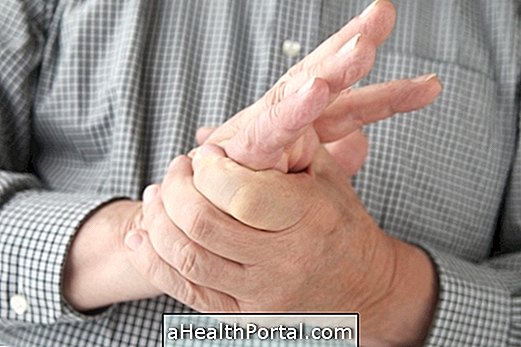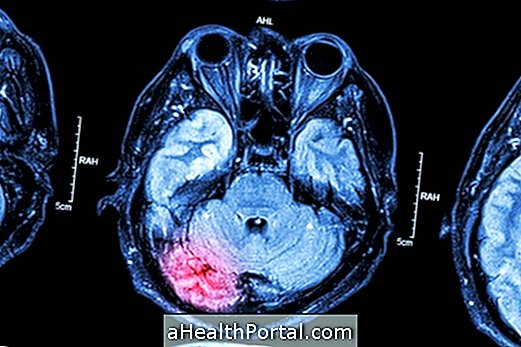Physiotherapeutic treatment for Alzheimer's disease should be performed at least 2 times a week in patients who are at an early stage of the disease and who have symptoms such as difficulty walking or balancing, for example, helping to slow the progression of the disease and maintaining the autonomy of the patient for a longer period of time.
However, when the patient is well advanced and bedridden, it is important to do daily physical therapy exercises with a therapist to avoid muscle atrophy and maintain joint amplitude for comfort and well-being. Read more about the disease in: Alzheimer's Symptoms.

Benefits of physical therapy in patients with Alzheimer's disease
The treatment of physiotherapy for the elderly with Alzheimer's has as objectives:
- To help the individual to move more freely, maintaining some autonomy and mobility to move in bed, sit or walk, for example;
- Prevent muscles from being trapped and atrophied, which bring pain;
- Allow the amplitude of the joints, to carry out the tasks of the day-to-day;
- Avoid falls and fractures;
- Avoid pain in muscles, bones and tendons, which cause discomfort and discomfort.
In this way, physiotherapy allows the individual to maintain some autonomy, being able to perform their daily tasks alone or with the least possible help.
In addition, if the ability to move and mobilize for as long as possible helps delay common problems in Alzheimer's disease, such as constipation, development of respiratory infections, or bedsores.
Exercises for Alzheimer's
Alzheimer's patients should perform simple and easy-to-understand exercises that the patient can understand and which should be similar to day-to-day activities in order to increase both intellectual and motor activity.
Physical exercises can be done by the patient or with the help of a physiotherapist, and these should be performed in brief periods of time, several times a day, to avoid exhaustion and lack of interest in the activity.
Some good examples of simple exercises for people with Alzheimer's in the early or intermediate stages of the disease include:
- Walking around the house or dancing;
- Put a plastic ball on top of the head and try to balance;
- Train brushing and combing hair;
- Tighten buttons on the blouse;
- Stand on one foot and walk sideways.

More recent cases of Alzheimer's may benefit from group exercises with weights and balls, for example, or even doing swimming or water aerobics and stretching.
Physiotherapy for patients with advanced Alzheimer's
When the patient with Alzheimer's disease is already in an advanced stage and is bedridden or has difficulty balancing himself, he must do physical therapy every day with a physiotherapist to prevent the patient from losing muscle mass and staying with the muscles and atrophied joints that bring pain and discomfort.
The physiotherapist should perform simple stretching exercises, always asking for possible patient collaboration.
Read too:
- Early Alzheimer's
- Cinnamon treats Alzheimer's
- 10 warning signs for Alzheimer's disease.
























